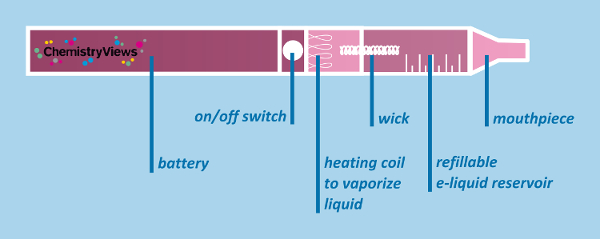Why Do We Smoke Nicotine And Do Not Inject It?
 Tobacco mainly contains nicotine as an active substance, as well as a number of other alkaloids and many other compounds. These include, for example, hydrogen cyanide, benzene, ammonia, formaldehyde, acrolein, crotonaldehyde, nitrosamines, hydrazine, vinyl chloride, polycyclic aromatic hydrocarbons, nitrogen oxides, cadmium, lead, nickel, chromium, aluminum, free radicals, radioactive polonium-210, and carbon monoxide.
Tobacco mainly contains nicotine as an active substance, as well as a number of other alkaloids and many other compounds. These include, for example, hydrogen cyanide, benzene, ammonia, formaldehyde, acrolein, crotonaldehyde, nitrosamines, hydrazine, vinyl chloride, polycyclic aromatic hydrocarbons, nitrogen oxides, cadmium, lead, nickel, chromium, aluminum, free radicals, radioactive polonium-210, and carbon monoxide.
Application Forms of Nicotine [1, 2]
Nicotine has unlimited solubility in both water and in oil. Therefore, application differences are caused by resorption reaction rates and are depend on pH.
.jpg)
e-Cigarettes

The liquids of e-cigarettes consist of varying proportions of propylene glycol, glycerin, water, flavoring substances, and possibly nicotine. The nicotine intake with a current evaporator of the 2nd generation compared to the cigarette is much slower.
E-cigarettes might be a harm-reduction option compared to smoking a cigarette. However, the aerosol is not only water vapor as is often claimed. It can also contain heavy metals, ultrafine particles, and carcinogens such as formaldehyde, acetaldehyde, and acroleine. There are more than 3700 flavours available, whose health risks have not been tested, so far. Many of these flavors are food additives, but it is unclear if something safe to swallow is also safe when inhaled.
References
[1] Sabine Streller, Klaus Roth, The Chemistry of Tobacco, ChemistryViews 2014. DOI: 10.1002/chemv.201400096
[2] Neal L. Benowitz, Janne Hukkanen, Peyton Jacob, Nicotine Chemistry, Metabolism, Kinetics and Biomarkers, Handb. Exp. Pharmacol. 2009, 192, 29–60. DOI: 10.1007/978-3-540-69248-5_2
[3] Sara Zorin, Frederik Kuylenstierna, Hans Thulin, In Vitro Test of Nicotine’s Permeability through Human Skin. Risk Evaluation and Safety Aspects, Ann. Occup. Hyg. 1999, 43(6), 405–413. DOI: 10.1093/annhyg/43.6.405


